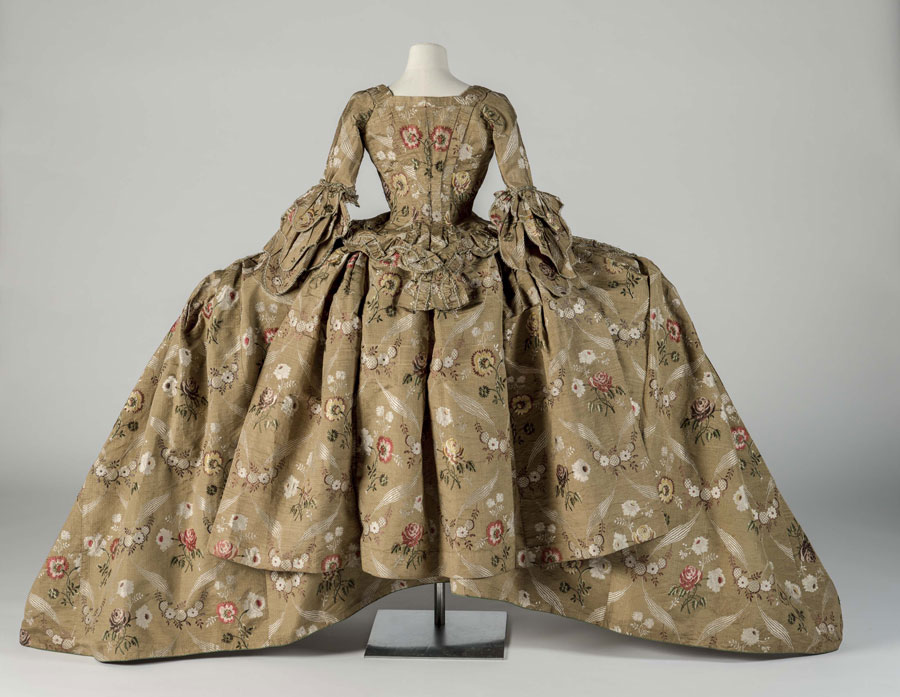The Vulgar: Fashion Redefined
Barbican Art Gallery, London, UK
Barbican Art Gallery, London, UK

Vulgarity is an irresistible subject for an exhibition. An invitation to stare: to gawp, even. It carries not only a suggestion of the aesthetically spectacular, but also a reassurance: to look upon and recognize vulgarity – to name it – places one safely distant from its taint. Or perhaps not: vulgarity, like the stratified codifications of a class system, brings with it complex interwoven chains of aspiration and disdain.
Put together by Judith Clark with writer and psychoanalyst Adam Phillips, ‘The Vulgar: Fashion Redefined’ proposes vulgarity as the seamy nexus of class, taste, ambition, consumerism, wealth and social and sartorial mores. Assisting them are high-fashion silhouettes from designers whose relish of vulgarity has been worn like a badge of honour: OTT cultural plunderings – including mock-Tudor ermine robes – from John Galliano and Viktor & Rolf; sexiness from Pam Hogg and Walter Van Beirendonck; five-figure supermarket-inspired naffness by Karl Lagerfeld; Vivienne Westwood’s anti-establishment V-flicking (think ‘Tits’ T-shirts and a fig-leaf bodystocking); and acres and acres of embellished, ruffled and fur-trimmed Christian Lacroix.

In his exhibition texts, inscribed on the gallery walls, Phillips suggests that vulgarity is the necessary ‘other’ against which good taste measures itself. Where fashion sits in this relationship is an interesting question. Fashion’s innate inconstancy dictates that, while it is aware of good taste, it only very rarely abides by it, instead describing an elliptical loop from and to decorous dress over many seasons. ‘The Vulgar’ celebrates those moments when fashion reaches the apogee of its orbit away from good taste. While in all instances this vulgarity is an adopted sensibility, for some it is a fleeting trend of no more consequence than any role play. Designers, such as Jeremy Scott – represented here by a collection for Moschino that drew on the graphic styling of junk food containers – for whom the exploration of vulgarity is career-long, have found themselves, in turn, falling in and out of fashion according to the prevailing mood.
In her introduction to ‘Notes on Camp’ (1964), Susan Sontag suggested that ‘to name a sensibility, to draw its contours and to recount its history, requires a deep sympathy modified by revulsion.’ Phillips’s aphorisms on vulgarity certainly betray such sympathy, if not for vulgarity per se then for the vulgar – the common people – rather than those who deplore them. Amid the Strass beading and mantua skirts comes an invitation to rejoice in the face of disapproval.

Our willingness to accept this invitation is assisted by the comfortingly 19th-century framework in which ‘The Vulgar’s narrative of taste and dissent is couched. Most of the costumes on show are from the late 20th and early 21st centuries, but vulgarity in the modern sense is presented as the offspring of the industrial revolution, a consequence of the rise in spending power and leisure time that created classes of people able to buy goods previously reserved for their ‘betters’.
The battle over taste and the territory of fashion is a preoccupation of our own times as much as it has been any other, however. It would be considerably less comfortable to examine, say, the vilification of ‘chavs’ or biting dissection of dress and body shape that occurs on social media than to examine sumptuary laws or giggle over antiquated books of etiquette.

At its most potent and deliberate, what some might term vulgarity serves to make the overlooked visible. As deployed by the black dandies celebrated in ‘Made You Look’ at The Photographers Gallery earlier this year, or in the Neo Naturists’ exposure of their own full-bodied womanhood in the etiolated company of the New Romantics, restaged at Studio Voltaire this summer, vulgarity is less a question of what is being worn, than by whom and in what context.
Vulgarity as a stance rather than a label is subversive: it’s DIY not department store, the stuff of the upstart rather than the couture house. This is where a costume exhibition, by its very nature, is problematic since, by and large, what is on display in these overlarge, overbright and overembellished gowns is the idea of vulgarity, colonized and bent to another purpose. Knowingly, Clark even introduces the suggestion that a fashion exhibition itself might be a vulgar notion: a display of costume’s inappropriate ambition to occupy the space of art.

This line of questioning is perhaps more heartfelt than Clark lets on, since impeccable high-fashion and couture silhouettes borrowed from their makers need to be handled and displayed with reverence: the designs may take the piss, but the curator may not. ‘The Vulgar’ is notably at its most critically fierce when it steps away from the straightforward display of costume. A vitrine of documents includes Steven Meisel’s 2005 Vogue Italia fashion shoot, set in a plastic-surgery clinic, and spreads from Tim Walker’s preposterously busty ‘Portrait of a Lady: Love Letter to John Currin’, from the Spring/Summer issue of Love. Between them, Annie Leibovitz’s portrait of Kanye and Kim on the cover of American Vogue (2014) is proffered without commentary.
























